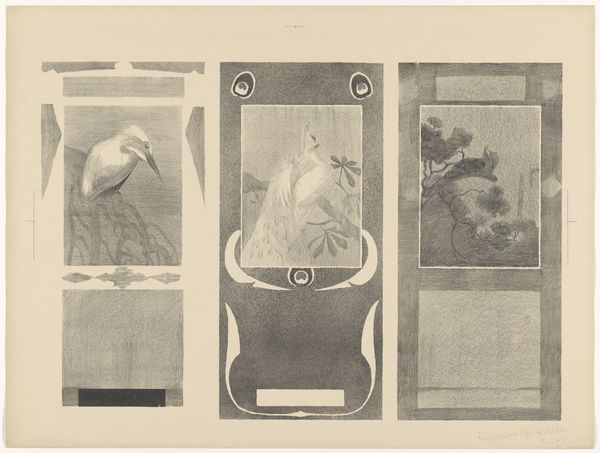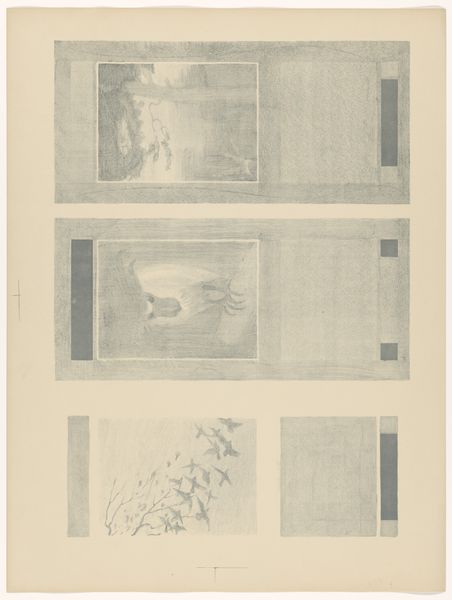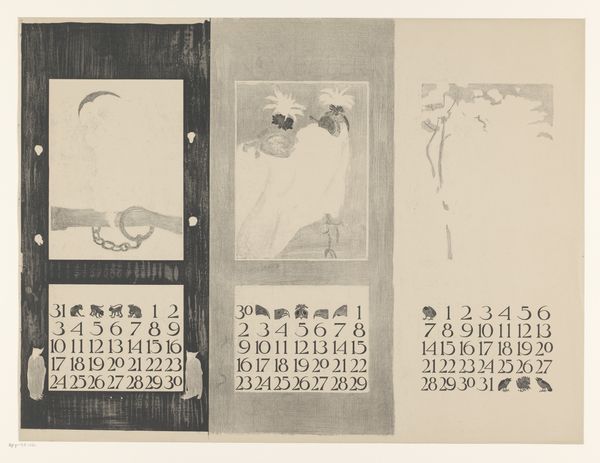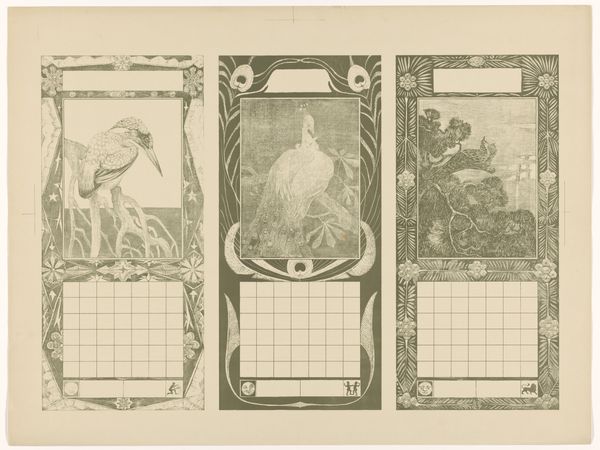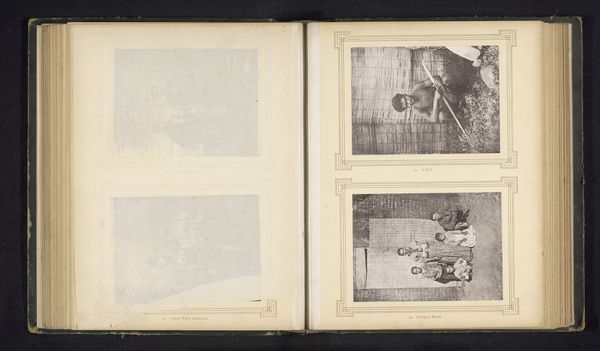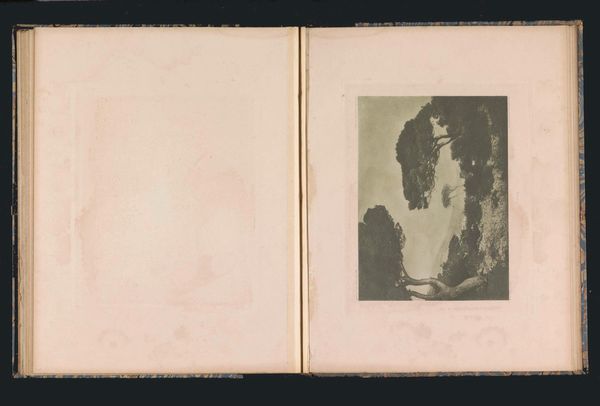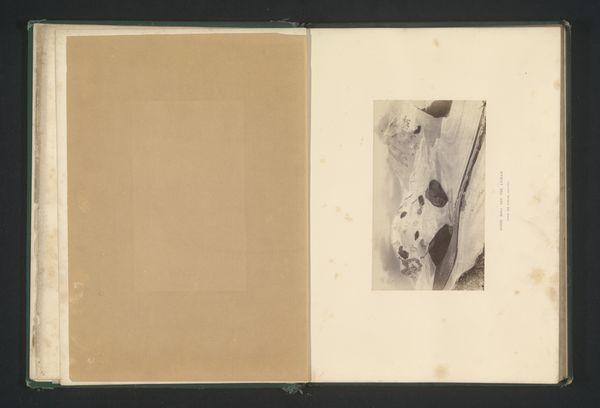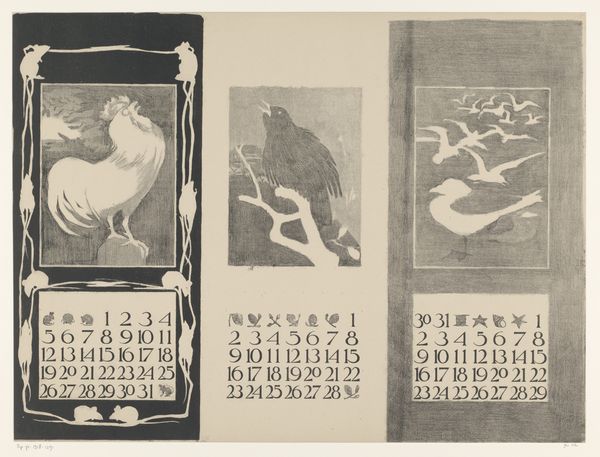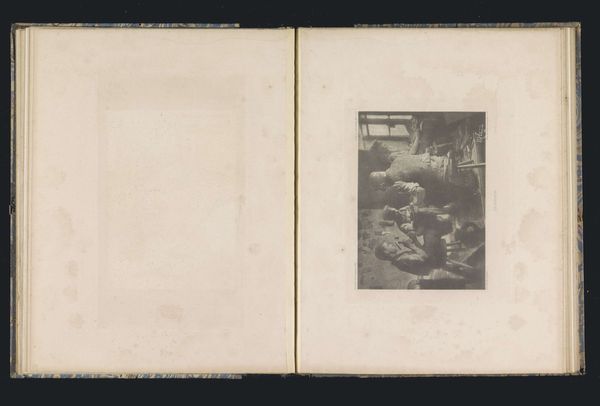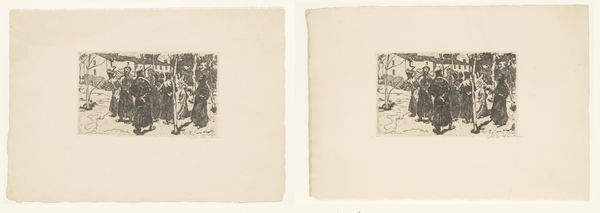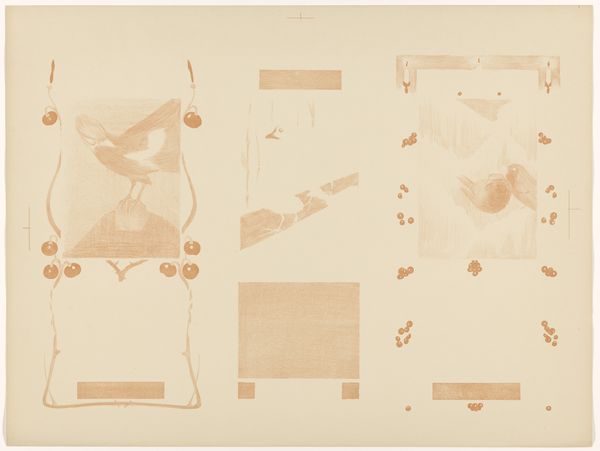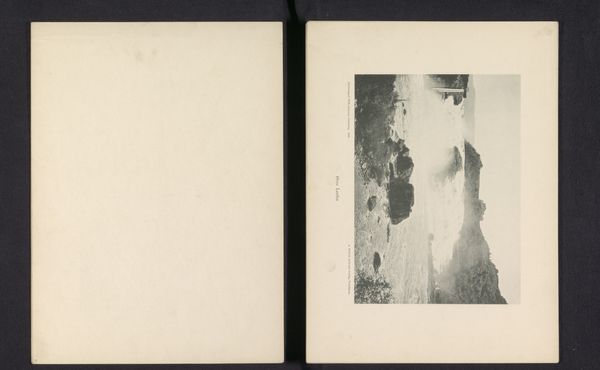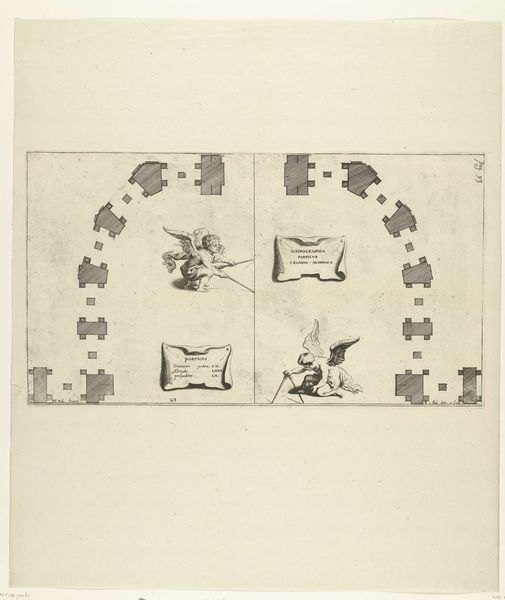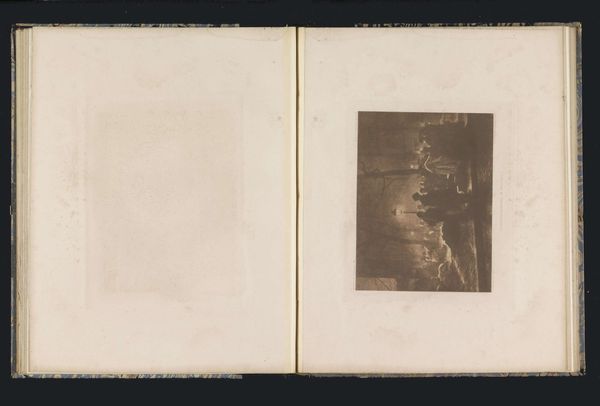
drawing, graphic-art, print, linocut, paper
#
drawing
#
graphic-art
#
art-nouveau
# print
#
linocut
#
landscape
#
paper
#
linocut print
Dimensions: height 733 mm, width 553 mm
Copyright: Rijks Museum: Open Domain
Editor: This is "Kalenders voor januari, mei en juli 1904," a print made by Theo van Hoytema using linocut on paper. The soft blue and cream palette create such a calming and subtle mood, almost like a faded dream. The composition is fascinating with its division into framed sections, each holding a different animal scene, but what really strikes you as interesting about this print? Curator: The piece exhibits a careful orchestration of form and line. Consider the division of space. We observe three distinct pictorial zones, each framed by geometric and stylized floral motifs. How do these divisions contribute to the overall reading of the work? Editor: They seem to separate each of the three months but create a common visual language, even a story as we transition from each part. What else did Hoytema want to present us? Curator: Note the tonal range achieved through linocut. Observe how varying densities of line and shape create depth and texture, lending a subtle three-dimensionality to the subjects, the Kingfisher, Peacock and landscape. Does this choice of medium alter your interpretation? Editor: It’s interesting that you mention the texture. Now I can see that the stark contrast almost provides another visual of Art Nouveau in graphic form. Curator: Precisely. By stripping away superfluous details, the artist directs our gaze to the essential structural elements. Now how does Hoytema manipulate line and form to draw the viewer into this two-dimensional space? Editor: So you mean the strong symmetry between each picture with their own floral shape designs? I would never catch something so nuanced about these patterns without taking the formal elements of line, form, and symmetry into account. Curator: Indeed, that is how Hoytema brings our eye through each scene, like a semiotic study to give us more clues to piece together, connecting art to each other across time and style.
Comments
No comments
Be the first to comment and join the conversation on the ultimate creative platform.
